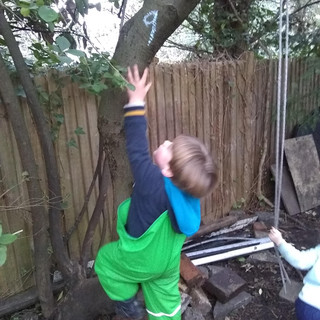Weekly Activities. Nature in Winter
- Keith
- Jan 15, 2020
- 2 min read
Description:
This week we discussed nature in winter - what plants, flowers, animals, bugs and birds we can find during this magical season.
Links to EYFS:
Personal, Social and Emotional Development
Communication and Language
Physical Development
Literacy
Mathematics
Understanding of the World
Expressive Arts and Design
Activity:
As winter arrives, we observed the changes in nature during the winter season. We used a “nature in winter” sheet which had different pictures on it such as a robin, a worm, a squirrel, a cloud, an evergreen tree, a deciduous tree, a spider and a flower.
The activity was designed to help children understand more about nature and the change in it during the different seasons, focusing on wintertime. The activity itself is an open-ended activity with endless questions to ask the children in order to widen their knowledge and engage their enthusiasm about nature in general.
Here are some examples of the activity:
Evergreen plants.
Point out, observe and describe the difference between evergreen and deciduous plants and trees. Break a fallen twig and describe it – does it “snap” easily (dry) or bend but not break (wet)? What are other indicators of “dry” or “wet” environments? Describe the leaves of the evergreens and compare – how are they different from other leaves that are green in the summer?
Wildlife.
Birds: How do birds seen in the winter differ from birds in the summer?
Bugs: Some bugs can still be found during the winter in the more temperate climates but you may have to hunt for them. Sounds like a good excuse for a bug hunt!
What other animals can we see: cats, dogs, foxes, rabbits, squirrels, hedgehogs or perhaps even deers?
What can you feel?
The sun or wind on their face? Is it relatively warm or very cold? How does the temperature change on their skin if they are standing in the sun or in the shade? Can they see any clouds? Which type? If there are clouds, can they make a weather prediction based on what they see? (for example snow or grey rain clouds?).
What can you hear?
Birds chirping? Leaves rustling in the wind? How about man-made noises such as cars, sirens or workmen? Do the sounds differ from those in the spring/summer? If so, how?
What can you smell? Smoke from burning firewood? Flowers? What wet or damp smells might there be at this time of year?
Home Activity:
Encourage your child to start a nature journal. Let them draw their observations and if appropriate, write simple descriptor words of anything they observe in nature whether in a garden, park, farm or woodland.

























